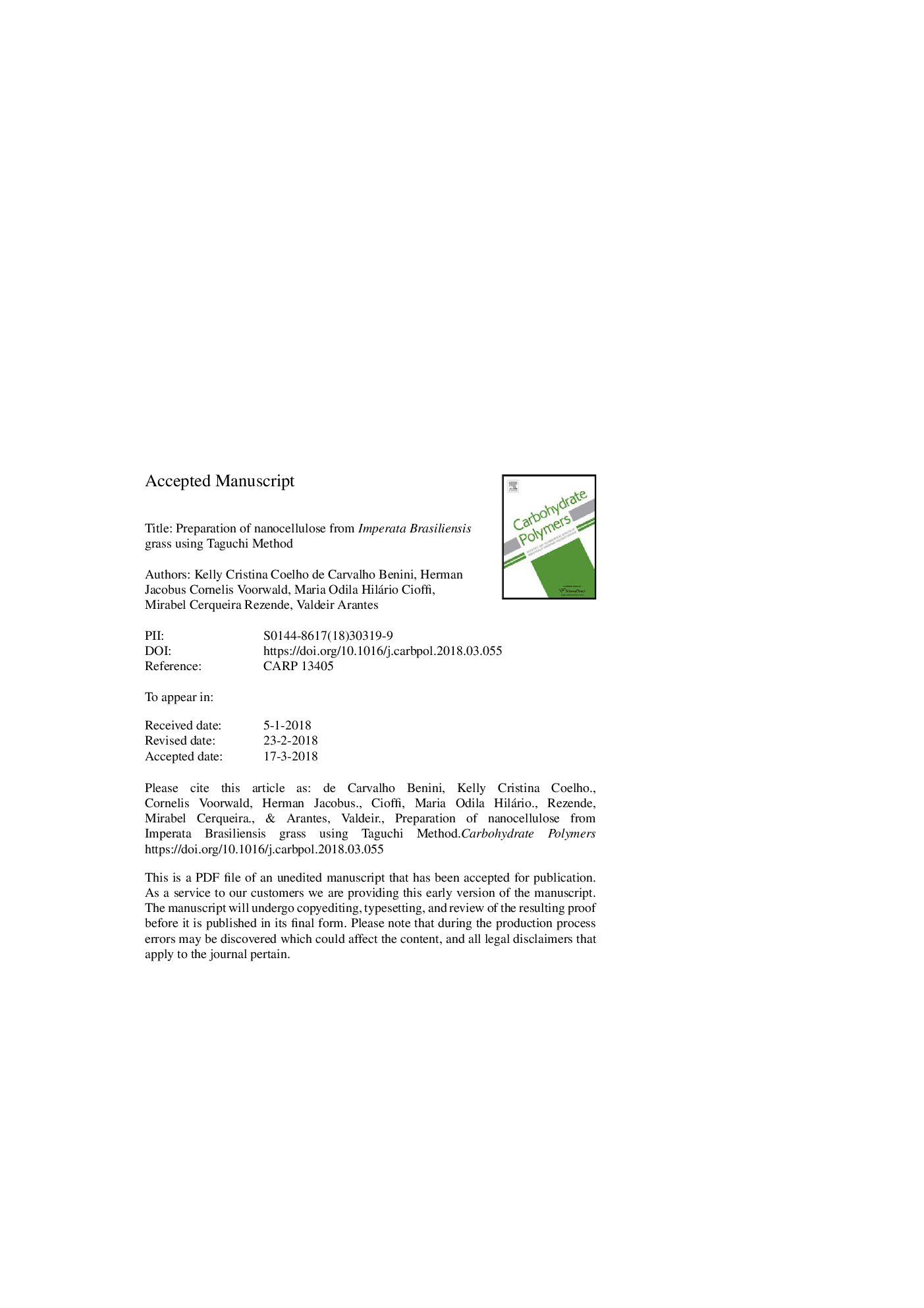| Article ID | Journal | Published Year | Pages | File Type |
|---|---|---|---|---|
| 7782858 | Carbohydrate Polymers | 2018 | 19 Pages |
Abstract
Cellulose nanoparticles (CNs) were prepared by acid hydrolysis of the cellulose pulp extracted from the Brazilian satintail (Imperata Brasiliensis) plant using a conventional and a total chlorine free method. Initially, a statistical design of experiment was carried out using Taguchi orthogonal array to study the hydrolysis parameters, and the main properties (crystallinity, thermal stability, morphology, and sizes) of the nanocellulose. X-ray diffraction (XRD), fourier-transform infrared spectroscopy (FTIR), field-emission scanning electron microscopy (FE-SEM), dynamic light scattering (DLS), zeta potential and thermogravimetric analysis (TGA) were carried out to characterize the physical-chemical properties of the CNs obtained. Cellulose nanoparticles with diameter ranging from 10 to 60â¯nm and length between 150 and 250â¯nm were successfully obtained at sulfuric acid concentration of 64% (m/m), temperature 35â¯Â°C, reaction time 75â¯min, and a 1:20 (g/mL) pulp-to-solution ratio. Under this condition, the Imperata Brasiliensis CNs showed good stability in suspension, crystallinity index of 65%, and a cellulose degradation temperature of about 117â¯Â°C. Considering that these properties are similar to those of nanocelluloses from other lignocellulosics feedstocks, Imperata grass seems also to be a suitable source for nanocellulose production.
Keywords
Related Topics
Physical Sciences and Engineering
Chemistry
Organic Chemistry
Authors
Kelly Cristina Coelho de Carvalho Benini, Herman Jacobus Cornelis Voorwald, Maria Odila Hilário Cioffi, Mirabel Cerqueira Rezende, Valdeir Arantes,
